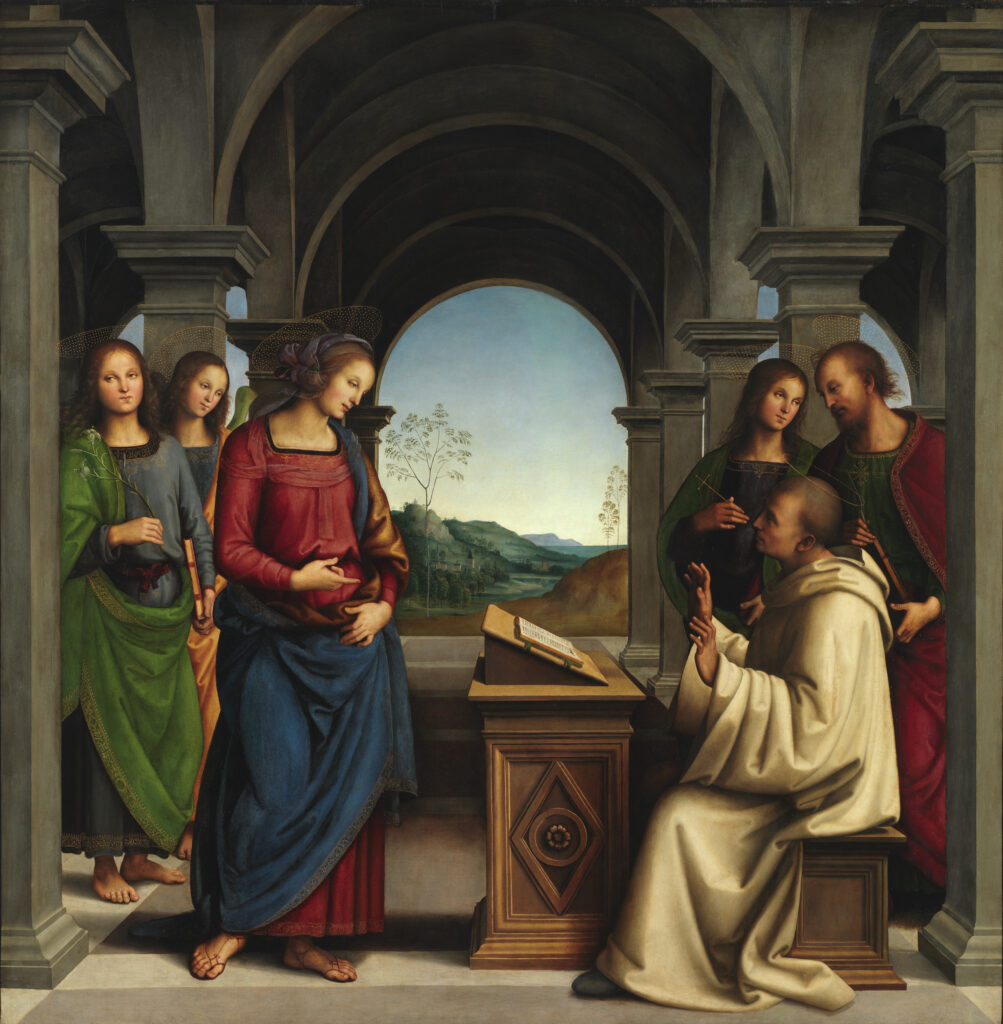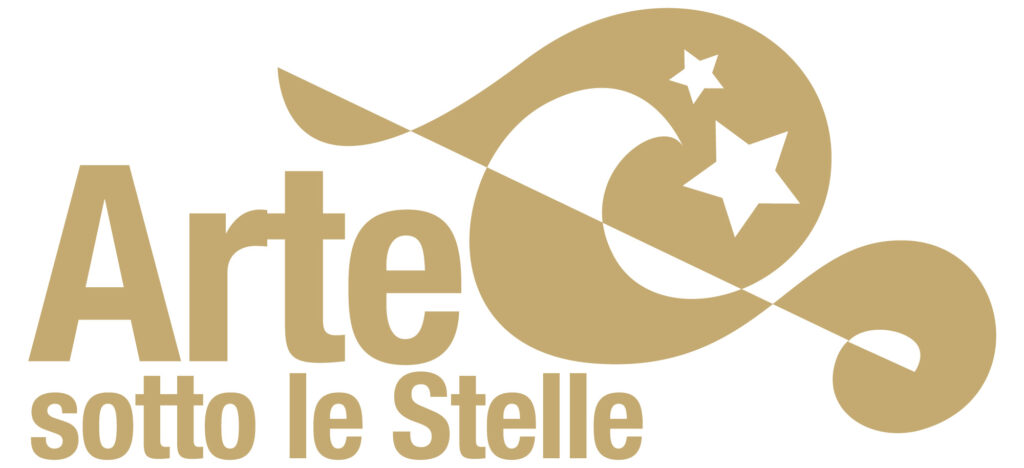Apparition of the Virgin to Saint Bernard – Alte Pinakothek – Munich
The altarpiece, dating back to the end of the fifteenth century, depicts the apparition of the Virgin to Saint Bernard, from which it draws its title.
Saint Bernard, intent on studying an open tome while sitting in front of a finely carved wooden lectern, raises both his hands as a sign of surprise before the vision of the Madonna, who points at the book placed between them with her right index finger.
On both sides, two groups of figures attend the scene: a pair of angels on the left and an angel and a saint (or an evangelist) on the right.
The characters are static and monumental: the drapery of their garments, together with the dense and very nuanced color, create a sense of strong three-dimensionality to the whole composition.
The gestures are composed and not exaggerated, while the appearance of the faces is consistent with the serene sweetness typical of Perugino.
The composition is framed by solemn but simple architectural elements: perfectly foreshortened in perspective a series of round arches, supported by square pillars ending in very projecting capitals.
The perspective construction directs the gaze in depth, towards a soft Umbrian hilly landscape punctuated by some thin tree. The sky fades towards the horizon, and the colors of the more distant hills gradually become less and less clear, recreating the effect of sfumato, often used by Leonardo in his artworks.
The work, originally commissioned for the Nasi chapel in Santa Maria Maddalena de’ Pazzi in Florence, was purchased in 1829 by Ludwig I King of Bavaria and later merged into the collection of the Alte Pinakothek in Munich. The panel is preserved at the Alte Pinakothek in Munich.











